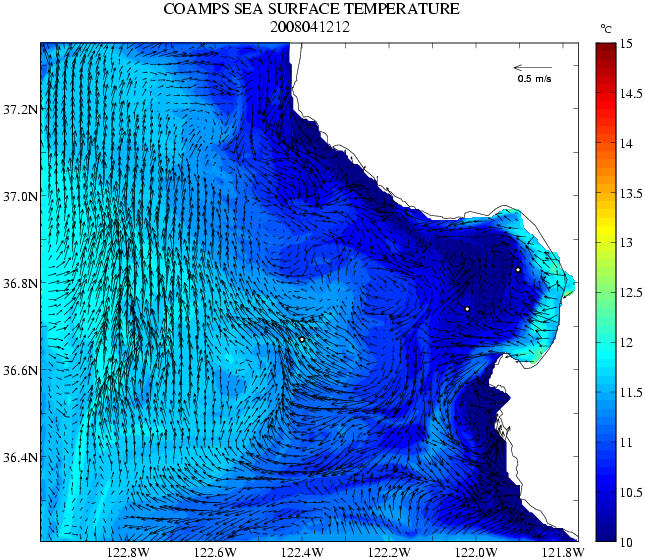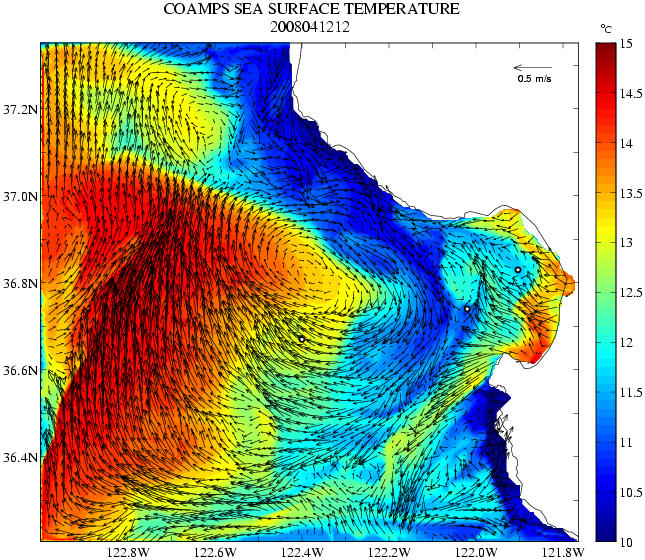United States Naval Research Laboratory
Bio-Optical/Physical Processes and Remote Sensing Section
6.2 Resolving Bio-Optical Feedbacks to Ocean/Atmosphere Dynamics
Objective:
A critical component of coupling between ocean and atmospheric forecast models is the accurate representation of thermal energy exchange at the ocean-atmosphere boundary. It is known that variability of bio-optical fields may modify the depth penetration of shortwave radiation into the ocean and subsequently impact thermodynamic processes. However, there is presently no consistent representation of this bio-optical field variability in the coupled ocean/atmosphere forecasting systems under development and scheduled for operational transition. Our objective is to integrate a representation of bio-optical variability into NRL¿s coupled ocean/atmosphere modeling framework, with specific emphasis on the extinction of solar radiation within the ocean model component, in order to improve operational forecasting of oceanic and, potentially, atmospheric properties. This new capability would further have application to the prediction of light and sound propagation in the ocean, forecasts critical to a wide spectrum of U.S. Navy operations. From a science perspective, it has long been theorized that the biological contribution to upper ocean heating may have an impact on temperature/density variability. Only recently, however, have advances in dynamical model development and computational power allowed for detailed model studies aimed at resolving how the bio-optical fields modify upper ocean physical processes. Our scientific goal is to build upon this work and leverage NRL¿s unique modeling, remote sensing, and observational assets to quantitatively determine how the optical properties of the upper ocean's organic constituents modify physical processes over a range of space-time scales. We are uniquely poised to make significant scientific contributions in this emerging area of oceanographic research.
Two-Way Coupled Ocean (NCOM) / Atmosphere (COAMPS) Modeling System; 500-meter horizontal resolution + Navy Coastal Data Assimilation System (NCODA)
Jerlov Water Type = 1 (Clear)


Jerlov Water Type = 5 (Turbid)

